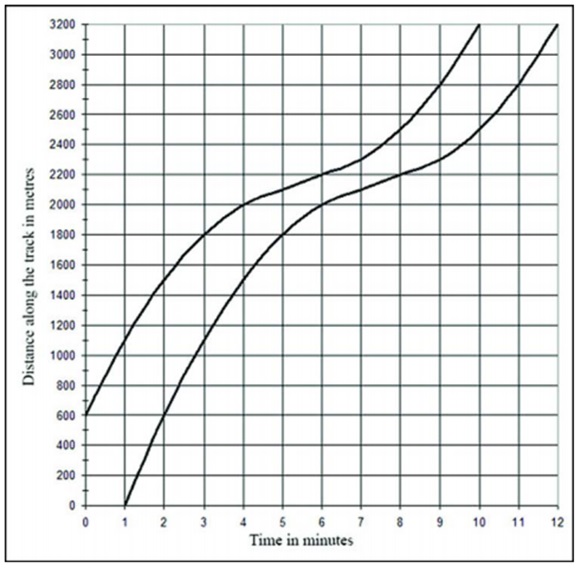Sample Homework : History Of Mathematics
Before Ancient Greeks
- Babylonians and Egyptians (2000 BC)
Greek Period (600 B.C to 450 A.D)
- Greek Philosophy
- Euclidean Geometry
Hindu-Arabian Period (200 B.C to 1250 A.D.)
- Hindu-Arabic Numbers Development
- Greek Mathematics’ Preservation
- Trigonometry Development
Early Modern Period (1450 A.D.- 1800 A.D.)
- Creation of Analytic Geometry and Calculus
Modern Period (1800 A.D. – Present)
- Probability and Statistic
- The origin of mathematics started from Babylonians and Egyptians and Pythagorean theorem in one of the most ancient mathematical texts generated from the Egyptian and Philosophy (Marcus & McEvoy, 2016).
- There are many names that are belongs to Greek period such as Thales and Hippocrates. Most of the Greek mathematics work based on the geometry such as Euclidean Geometry which was based on theorems, proofs, and postulates (Lattmann, 2018).
- After Greek Period, Hindu-Arabian Period started, and it was the Hindus who developed zero symbol, positional notation, and powerful techniques related to arithmetic. In addition to this, in this era mathematicians from Arab provide a methods of solutions for cubic and higher degree polynomial equations (Marcus & McEvoy, 2016).
- In early modern period, Isaac Newton invented the calculus and his major ideas are developed by other mathematicians.
- In this modern period that started from 1800, more development was made such as in order to solve the numerous practical applications throries of statistics and probability are developed.
Aristotle and Education
- Born In BC 385 (Stagira)
- Tutor of Alexender the Great
- Method of teaching was Scientific
- Analytical and Logical
- Education and Parents
- Education and State
- Moral Development
- Artistotle was born in Stagira in 385 BC and he completed his early education from the greatest pholospher Plato.In addition to this, he was taught and a teacher of a great personality i.e. Alexander the Great (Artistotle, 2019).
- More importantly , the method that he was adaopted for his investigation and teaching was scientific and use logical and analytical skills in dealing with math subjects. (Heath, 2015)
- He believed that its is the responsibility of the parents to provide early education to their child, after that state is responsible for it.
- According to his belief moral development is also the responsibility of the parents (O’Regan, 2016).
Contribution to Mathematics
- Introduced Inductive and Deductive Method
- Logic of the Categorical Syllogism
- He added third step to Scientific Method
“ a hypothesis must be tested to be proven”
Artistole suggested two type of methods for the teaching in the classroom and these methods are inductive and deductive method. In addition to this, he also present the logic of categorical Syllogies which present an argument that is consists of 3 categorical propositions. (Artistotle, 2019). Moreover, he also present a third step to scientific method.
Anecdotes
- Affectionate Character
- Self-Importance
- Care of Children
- Care of Servants
Learning Activity For Classroom
- Graph Stories
Many anecdotes about Aristotle shows him as affectionate character and found self-importance, happy family, care of children, as well as his servants in his work (Artistotle, 2019).
Learning Activity For Classroom
- Graph Stories

Steps for Conducting Graph Stories In Classroom
- Using a narrative to help learning
- Reading and Interpreting Graphs
- Suggest students to build a story
- Suggest students to make their own graph
- Conclude the whole story
Graph Stories activity has been used by teachers in classroom as it enables the student to use their creative thinking and math skills. In addition to this, students also explore the things and get answers such as when observing a person walking and jogging how slopes of lines differ. So, teachers instructed their students to draw a graph which shows a multiple slopes and write a story which explains the thing. This activity allow the student to present their story in the classroom.
- Teachers conduct graph stories through above mentioned steps. Teachers asked student to narrate a story with their group members and then use graphs to interpret the situation. This graph activity help out the student to make a story about the situation or incident and they build a graph by using their own mind. For instance, one of the student narrating a auto rickshaws racing to their group member and he interpret the information in terms of graph which help out other students to understand the whole story.
Figure shows that the motion of two auto rickshaws that are racing with each other. Both two rickshaws go around a bend in a road.
References
- Aristotle (384 BC-322 BC). (2019). Retrieved 12 October 2019, from http://www-history.mcs.st-and.ac.uk/Biographies/Aristotle.html
- Heath, T. (2015). Mathematics in aristotle. Routledge.
- Marcus, R., & McEvoy, M. (2016). An historical introduction to the philosophy of mathematics.
- Lattmann, C. (2018). Diagrammatizing Mathematics: Some Remarks on a Revolutionary Aspect of Ancient Greek Mathematics. Revolutions and Continuity in Greek Mathematics, 8, 107.
- O’Regan, G. (2016). Mathematics in Civilization. In Guide to Discrete Mathematics(pp. 1-24). Springer, Cham.


